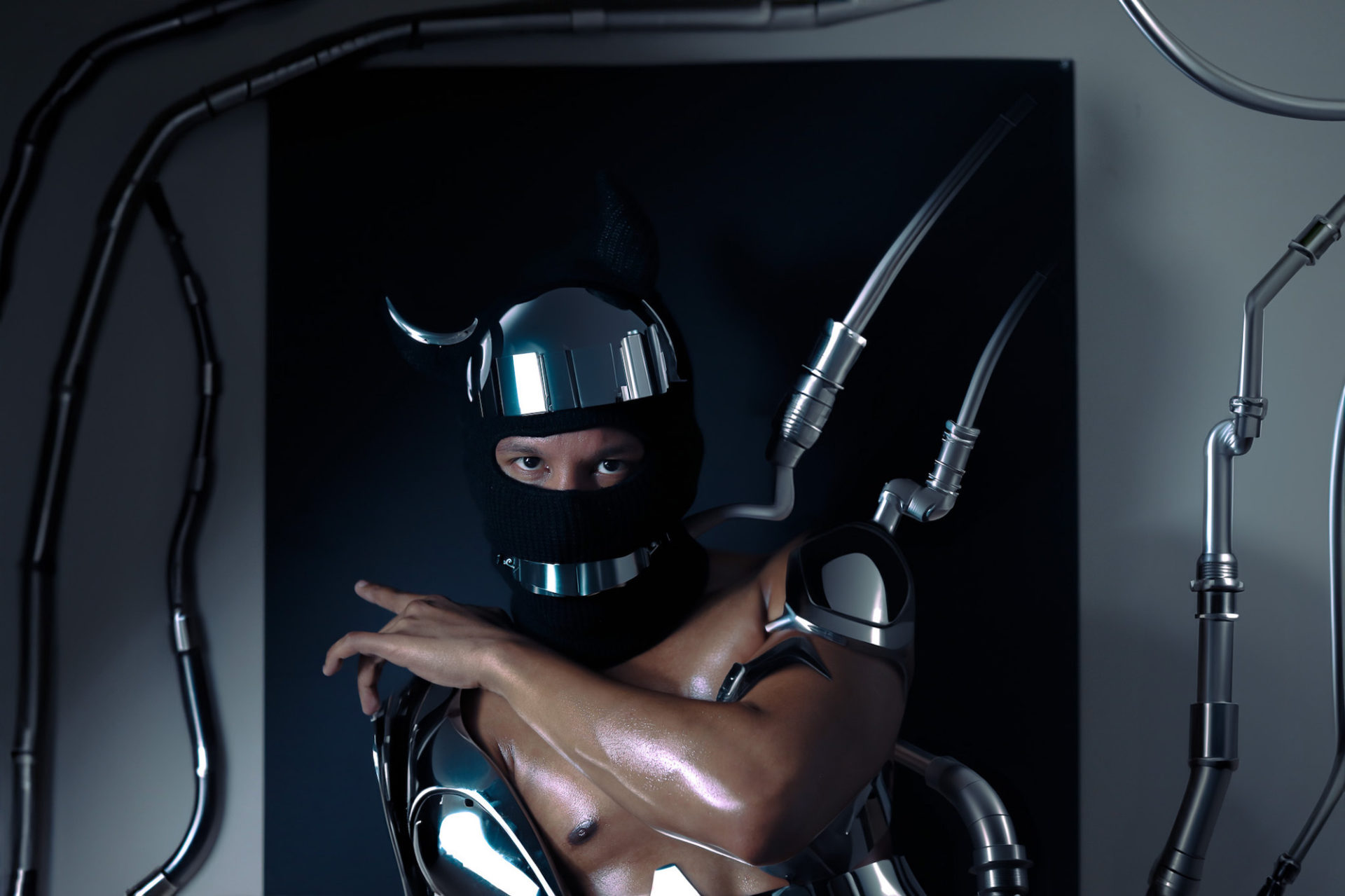Photographer and artist Marcus Flinn started out like the rest of us, taking photos of himself on his phone…and then it turned into something more. Flinn’s self-portraits are incredible: from conception, design, to execution, you can tell every detail was meticulously planned and the results are incredible. Sometimes beautiful, sometimes deeply uncomfortable (he has one featuring scissors poking into his skin that makes my entire body hurt, but you can check it out on his Instagram), they are a creative foray into visual storytelling using his body as the subject. I recently corresponded with Flinn about how he got started, the role of fashion in his art, how he executes some of these incredible portraits and more. Here’s what he had to say:
Some answers have been edited for length and clarity.
Smile Politely: Tell me a little bit about yourself. What’s your connection to Champaign-Urbana? Is photography your full-time job?
Marcus Flinn: As surprising as this sounds, I don’t have a connection to Champaign-Urbana at all! I’m from Central Pennsylvania, and I moved out here in 2014 because of a past relationship — I developed roots ever since. Photography is not my full-time job, but it is very much integrated in my current job. I am the Communications Manager for Experience Champaign-Urbana, so I have many opportunities to get out into the community and take photos of our local business owners, annual festivals, live music events, and outdoor spaces.
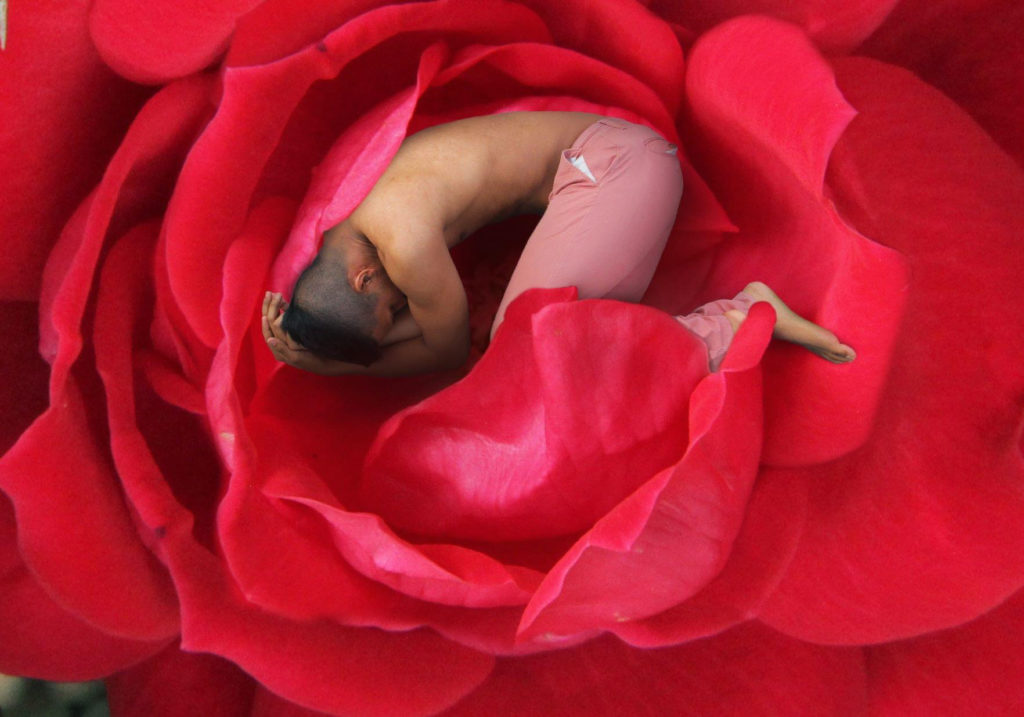
SP: Your photography seems to really center on self-portraits, and you make them so incredibly interesting. I’m making an assumption here, but I’m guessing you probably started off taking selfies like everyone else. How did that evolve into this art form for you?
Flinn: I sure did! I started dabbling in selfies around 2006, 2007 when MySpace was at its peak. They started off super generic. I had a $50 Electric Blue Samsung camera with a ten second timer. I didn’t have a tripod so I used boxes, textbooks, some of my mom’s Stephen King novels, anything I could find that gave my camera some height. I was bullied frequently in high school, and being the only Filipino-Black, openly-gay teen in a non-diverse conservative high school at the time; I stuck out constantly. So right from the beginning, I shot them as a form of self-expression and a way to reclaim my own identity.
It wasn’t until around 2011, 2012 that I started to buckle down on my craft. I got a better camera, a tripod, and I started to experiment with different poses and editing styles. I’d bike around my hometown during the summer and shoot outside for hours. I started to hang from railings, ladders, staircase, off of grain mills, did jumping shots in the air, and contorted my body in ways reminiscent of America’s Next Top Model. I’m honestly surprised I didn’t injure myself. I was doing the most back then.
I created my first photo manipulation in August 2012, and this was the year I started to teach myself Photoshop. It featured two versions of me: one dressed in white and another in black, both looking at each other, with smoke coming out from behind my back(s). I was inspired by Beyonce’s I AM Sasha Fierce album. She created Sasha Fierce, her onstage alter ego that was aggressive, commanding, confident, and vivacious […] compared to Beyonce (offstage), who was more private, shy, demure and self-contained. As a 20-year-old, I felt a similar push-and-pull within myself. I am both extroverted and introverted, and back then I didn’t know how to balance the two. I quickly realized this process could turn my work into a visual diary. I could express my innermost thoughts, feelings, and desires without having to verbalize them out loud.
The following year, I started exploring themes centered around mental health. I was diagnosed with major depression when I was 14, and I had plenty to get off my chest. From 2013 onward, I kept improving my technique and created portraits with more emotional depth — it eventually took on a life on its own.
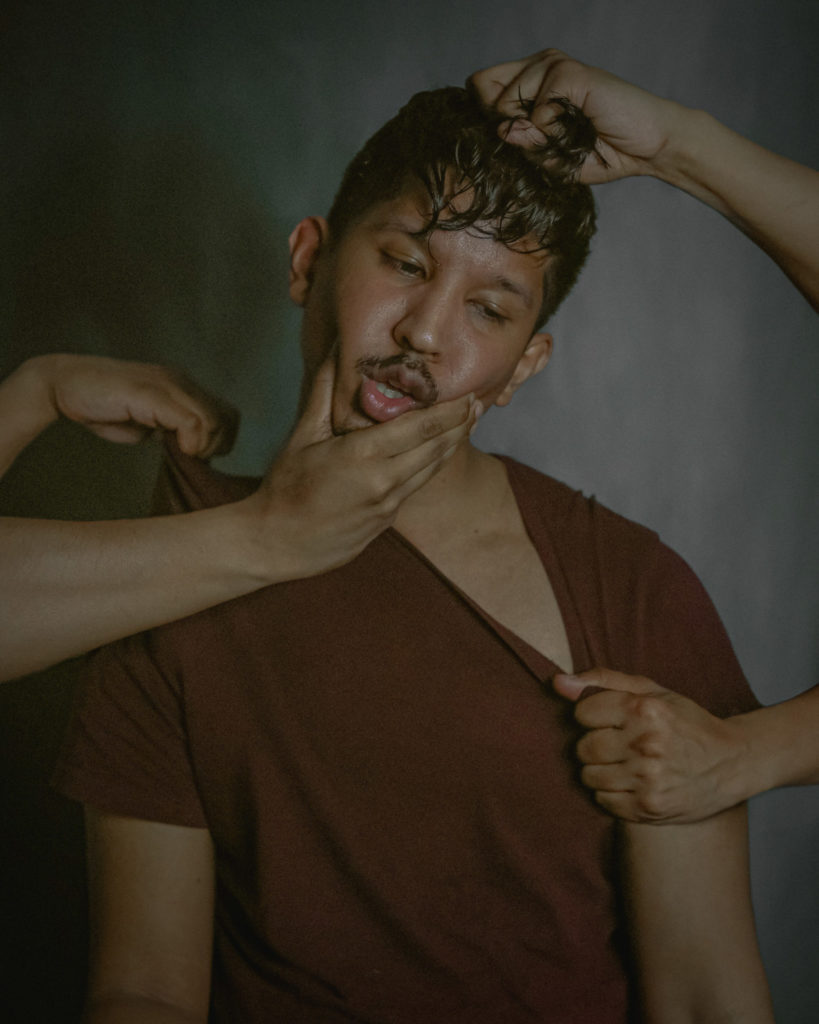
SP: Your photos are all very different from each other — even though you are in all of them — and they are also incredibly visually interesting. Where do you draw your inspiration from?
Flinn: I pull inspiration from many mediums, most notably surrealism (Frida Kahlo, Salvador Dali, Erik Johanson) music, fashion, music videos, the avant garde, editorial magazines (a la Vogue, Paper, Pap Magazine, Interview), and my own personal experiences. I’ve always been drawn to shock value. I think of Frida Kahlo’s The Broken Column, or the surreal, high-fashion work of artists Elizaveta Porodina (@elizavetaporodina on IG) or Daniela Rubinshetein (@daniel.rubinshetein on IG). I also resonate with musical artists who tend to reinvent themselves over time. Similar to musicians, I love being a chameleon and incorporating different sides of my personality through my work. I think that’s why my photos are so different from each other.
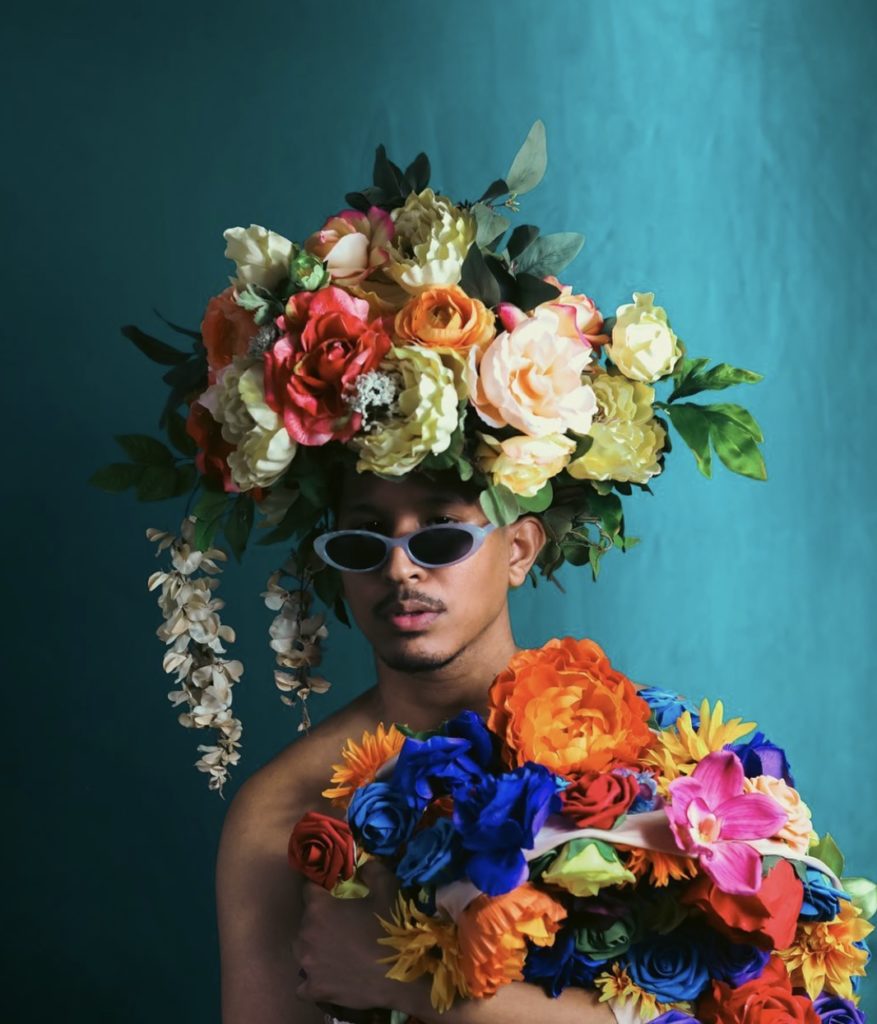
SP: In what ways does experimentation and improvisation play into your photography?
Flinn: I usually experiment during post production when I’m deciding how the lighting, shadowing, and overall colors should look, but I’ll also think of ideas on the fly during the shooting process. I love creating filters from scratch on Adobe Lightroom. I never know how I want the colors to turn out, so I’ll create a filter, download the file, bring it back to Lightroom, and cake on more color and lighting until the image almost looks cinematic. I’m drawn to lots of texture, drama, depth, and grain. I try to stay true to my vision as best I can, but being your own photographer, set designer, model — there are limitations, so it’s almost necessary for me to improvise. I can’t count how many times I’ve traveled to shoot somewhere only to forget props or my tripod, so I’ve used tree stumps and dirt mounds as natural tripods before. I’ve edited in items I forgot to bring on set through Photoshop. I’ll create grandiose concepts only to realize I can do about half of what I’ve imagined because of budgeting, the weather, or other factors outside of my control.
SP: You have some videos up that show a short version of the process of taking a self-portrait. Can you talk a little about your specific process? For a photo where you are trying to capture the fabric floating above you outside — how many takes did you do? Did you know exactly how you wanted it to turn out before you got there?
Flinn: With that video, I knew exactly how I wanted the photo to look before recording, down to the audio I used and how the video should be edited. I’m not gonna lie — despite having a strong vision, I did about 18 takes before I was satisfied! I actually edited the photo first and then tackled the video second. I’m a perfectionist, so I figured if the photo didn’t look good, the video would also reflect that. In general, I can spend up to an hour to a few days editing a project. Believe it or not, coming up with a concept takes a lot longer than the production process. I research often, and it has to make sense in my head and has to align with whatever I’m feeling or going through in that moment.
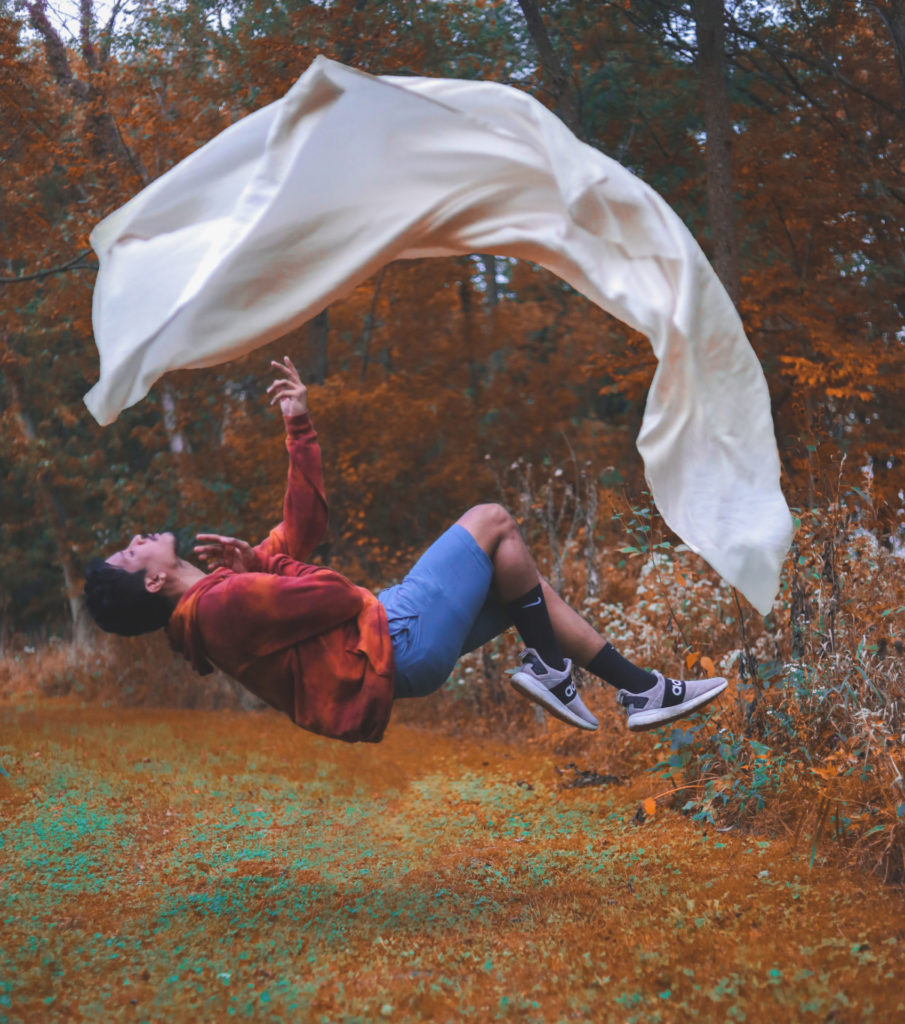
SP: I was trying to decide what my favorite photo of yours is, and it was basically impossible because they are so good. But, I do particularly love the one you used on your Boneyard post — you are leaning against a car at night in a hoodie on your phone, and there is this tall fabric-like figure above you, extending a hand towards you. Can you talk about the concept of this shot?
Flinn: Thank you so much! This may come off as cliche, but that concept came to me in a dream. Back in March, I had two dreams of being in a parking garage. In the dream, it was nighttime and I was alone, yet the air around me was warm and I felt safe. I didn’t know what this meant, so I looked it up online. Apparently, parking garages can symbolize craving security or seeking shelter from something — much like how we use parking garages to shield our vehicles from bad weather. I was working through something difficult back then and I remember avoiding the “heavy stuff” just so I can have some semblance of control in my life. The photo is representative of how we tend to retreat to that safe space, whatever that space may look like, when things in our lives get too difficult. The parking garage in my dreams became the space for that photo. The hoodie represents the comfort item I put on whenever I feel depressed, and the phone is another symbol of escapism. Many of us tend to mindlessly scroll on our phones when we become overwhelmed, and I’m certainly guilty of that. The fabric-like figure is a representation of my personal struggles and intrusive thoughts. Despite me being in the safe parking garage, wearing my comfortable clothes and scrolling on my phone, the apparition is still making a presence in my life. No matter how hard we try to self-soothe, escape, or do whatever we do to get temporary relief from life’s issues, the same struggles will continue to show up until we deal with the difficult things head-on. That is the overall message of that photo. My first Boneyard exhibit, SPECTRUMS, focused on the nuances of depression, so I felt that concept was appropriate for the showing.
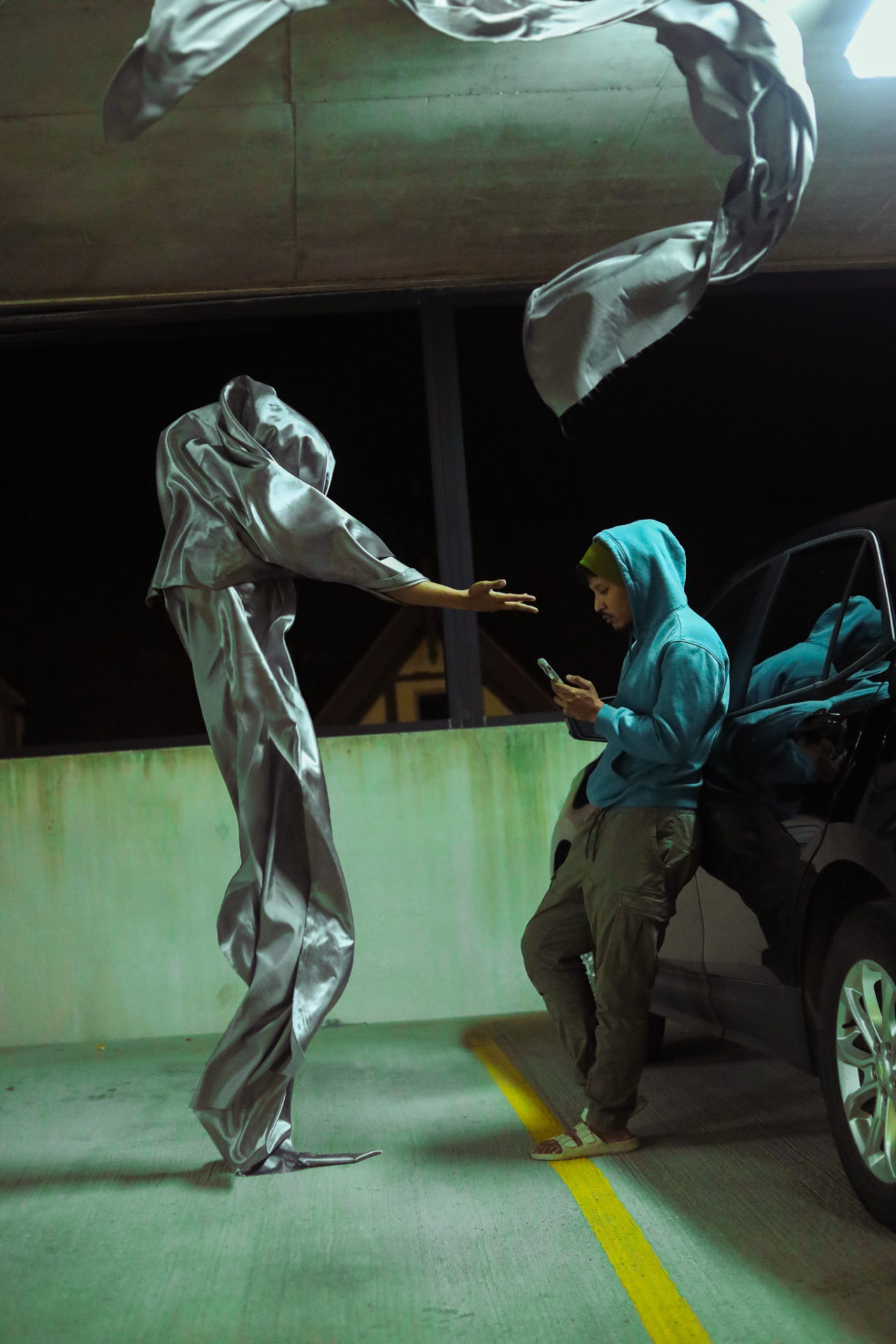
SP: You have a new editorial series inspired by Beyonce, and it features a lot of chrome-wear. How do you incorporate or approach fashion when it comes to your art? Do you, for instance, find a piece of clothing and then build off that, or do you have a concept first and then find all of the other pieces?
Flinn: I approach fashion as another way of story-telling. Down to a garment’s color, length, texture, sheen — fashion adds context and nuance. On the contrary, there are portraits I’ve done where I show a lot of skin — to me, it is representative of showing vulnerability. I typically have a concept and then I scour the internet for pieces. Sometimes, I’ll create shapes over my body on Photoshop and overlay them with metal textures, generative AI and stock photography — it’s a great alternative because it can get expensive real quick. With the chrome series, this is the first time I’m infusing editorial fashion in my work, so I’m excited to see how that will play a bigger role in my portraits.
SP: What else are you currently working on?
Flinn: I’m mapping out a concept that draws inspiration from Sandro Botticelli’s The Birth of Venus. I’m weathering down the chrome and infusing it with more floral, earthly elements. With this particular photo, there will be an “exchange of power” between armor and nature, and I think that’s pretty symbolic regarding the newest chapter in my life right now. It’ll be one of the pieces unveiled for Boneyard Arts 2024.
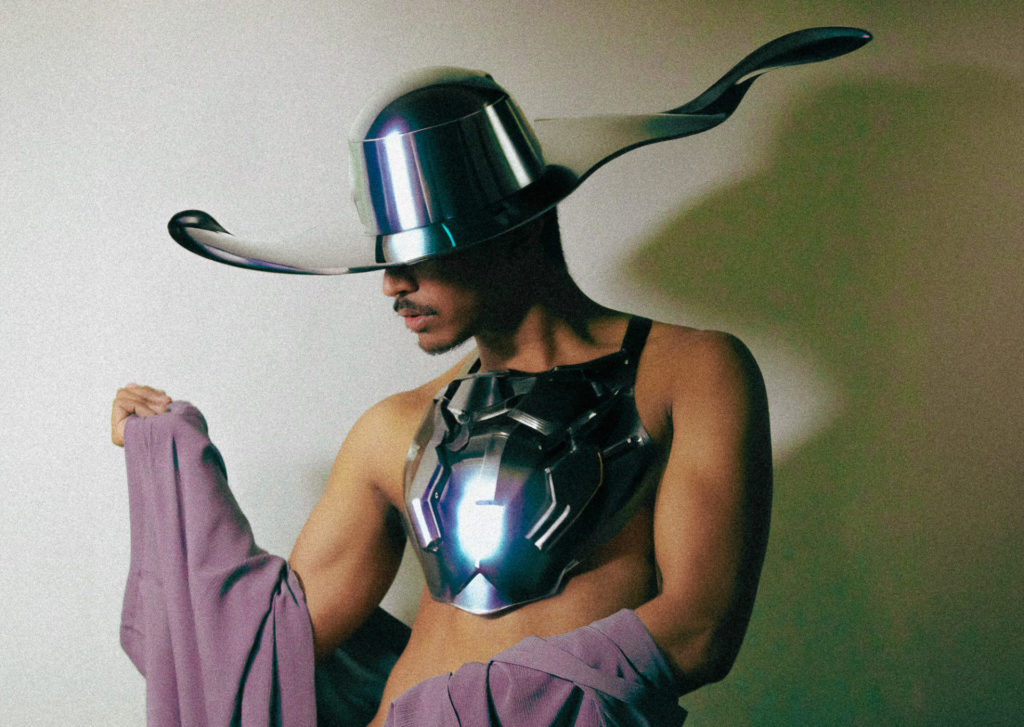
SP: If someone wants to check out your work for the first time, do you have something in particular you recommend?
Flinn: I’d recommend anything from my first Boneyard Arts exhibit, SPECTRUMS. Not only is it a display of some of my most technical work, but the subject matter revolves around mental health — a topic that most people can resonate with.
SP: Is there any place around C-U where people can check out your art?
Flinn: 40 North will be hosting a group display of local Black artists inside of the Champaign City Council Chamber, which I’ll be a part of and will be happening some time this year. I recently submitted to Busey Bank’s 1868 The Exhibition as well, so you may see my work there!
SP: What’s next for you?
Flinn: Creating for Boneyard Arts Festival 2024 is heavy on my priority list, and I’m also designing a website for my portraits. I’ve been quietly submitting to online publications as well, so there are some exciting things on the horizon. For the longest time, I felt I wasn’t ready to put my work out there…but I’m ready now. I’m especially eager to unveil what I’ve been working on for Boneyard. It’s my most ambitious project to date, but it’ll be worth the wait.








